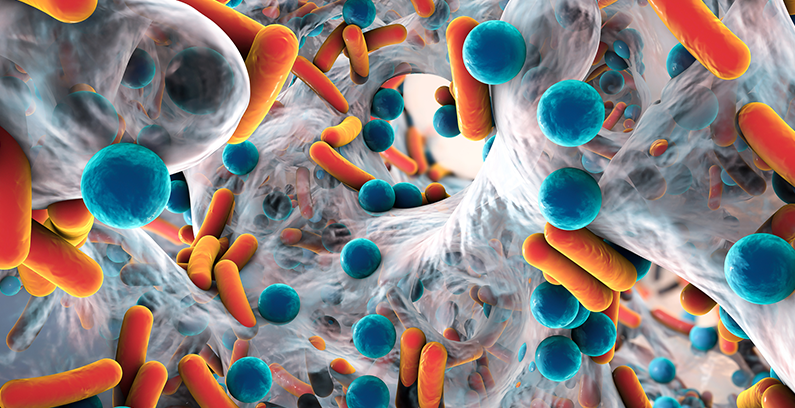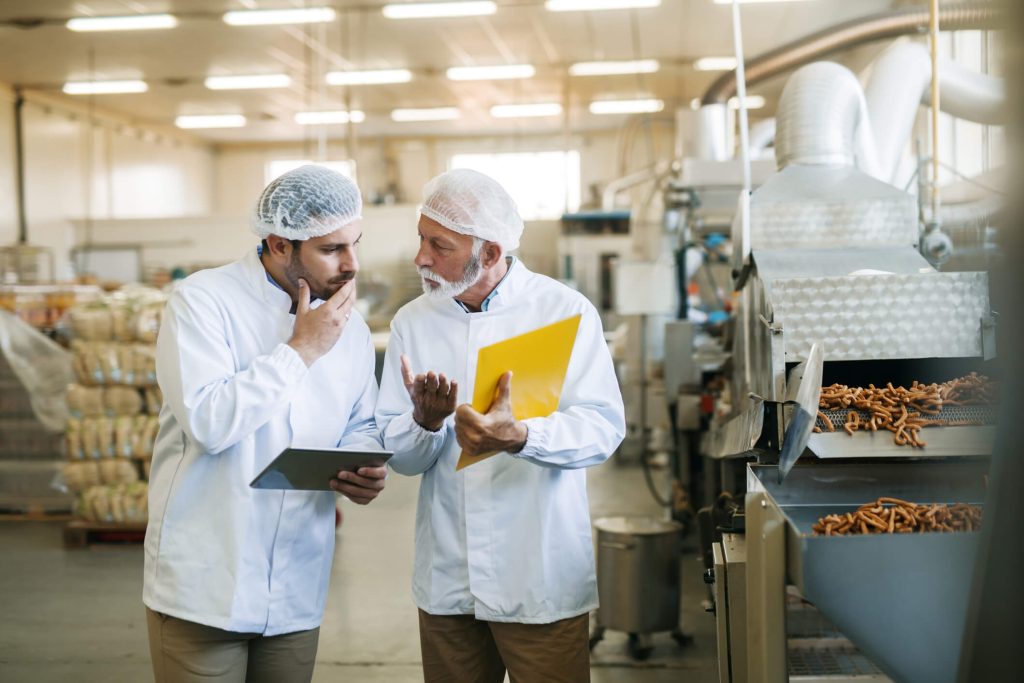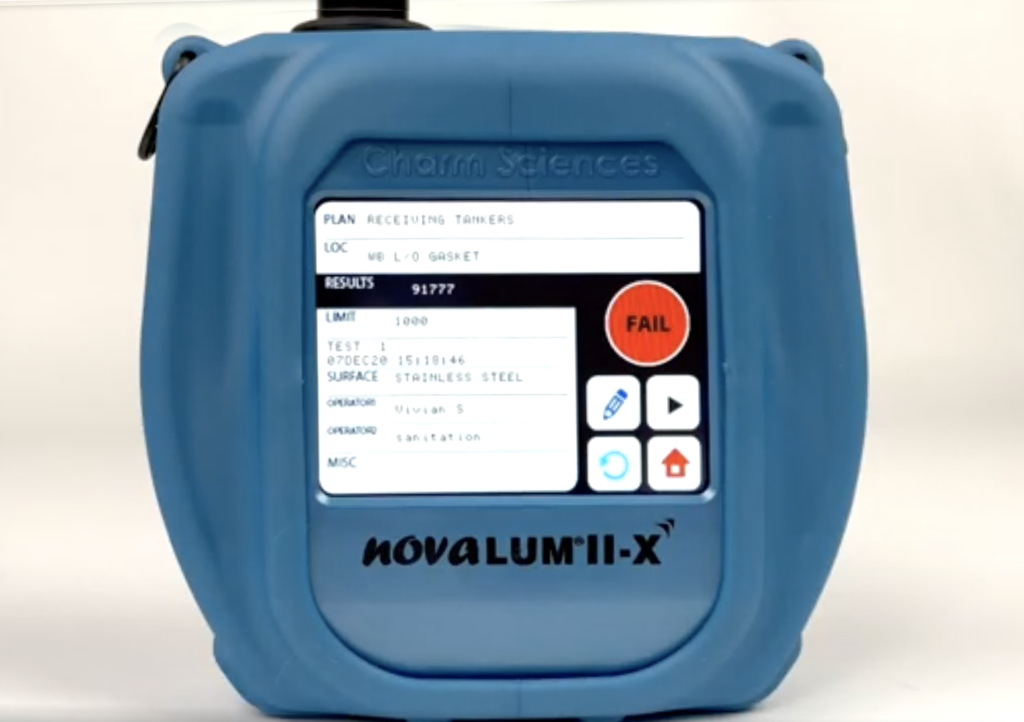Blog
Biofilms and Their Relationship to ATP

Biofilms are the unseen curse that can wreak havoc on a quality system. They are the bane of the existence of food Quality Managers. As a Quality Manager, you create a Food Safety Plan comprised of Standard Operating Procedures (SOP) that are sound, follow Food and Drug Administration (FDA) guidelines, and actively control every critical control point and process risk in your facility. The Plan is seamless and accounts for microbiological, chemical, and physical food hazard risks. Suppose you find a failure in the final product, such as detecting a pathogen. In that case, the entire lot is lost, and you are left doing corrective action determinations and wondering what happened.
In the case of microbiological failures, biofilms are what has happened. A single cell, less than 0.75 microns in size, can destroy millions of dollars of product in less than twelve hours. The pervasiveness of bacteria is unequaled and complemented by bacteria’s simplicity. Evolutionarily it is awe-inspiring, but to the facility following its Food Safety Plan SOP’s to the letter, bacteria’s ability to adapt and survive harsh conditions is disheartening.

What is a Biofilm?
Bacteria are living organisms with the singular goal of reproducing. They follow the hierarchy of primal needs. They absolutely do not want to die and, because of this, develop defense mechanisms. Biofilms are microbes that are inherently sticky. They attach to other food proteins, fat, extracellular Deoxynucleic acid (DNA), and Polysaccharides on surfaces. The multiple layers of biochemicals and cells provide structure for bacterial replication and protection from cleaning chemicals and sanitizers. The result is that bacteria have adapted to create a hardened shell to human-made cleaning solutions. A single bacteria can lodge in a crack, half the diameter of a human hair, and will begin to proliferate. If left unchecked, the growing biofilm will create the protective matrix shell. And once it has a foothold, it can multiply, and displacing it becomes challenging.
Under the protection of the shell, the bacteria begin to thrive and grow. There is a point at which the pressure of the colony will become too great, and chunks will detach and flow downstream. These new colonies will either attach somewhere else in your processing plant or end up in your final product.
Bacteria and Adenosine Triphosphate (ATP)
ATP is the energy currency of all living matter. It’s a simple molecule used by all known forms of life, plant, fungi, prokaryote, and eukaryote microorganisms. Additionally, it has the property of activating the firefly enzyme luciferin to produce light. This property makes ATP the perfect medium for verifying sanitation processes and determining the effectiveness of sanitation protocols.

If you run your cleaning and sanitation cycle, test for ATP directly afterward, and get higher results than expected, you have one of two problems. Either your cleaning cycle is not working, or you have developed a residual biofilm somewhere along the line. Cleaning chemicals are designed to remove all organic matter and mineral deposits. But when biofilms form, additional scrubbing is required to break the biofilm shell and release the stuck biochemical. Without this cleaning, the following sanitizers are less effective as they don’t penetrate the biofilm shell to get at the lurking microbes/pathogens.
Further, there is generally a high-temperature cycle added to kill bacteria. However, biofilm can prevent the heat from penetrating the lower depths of film, giving any microbe some protection. After the cleaning and final rinse, the system is assumed to be clean. But if there is a presence of ATP, residual food or biofilm is present that might circumvent the final kill step after cleaning.
Importance of ATP Sensitivity
The light produced when ATP reacts is detected by a luminometer. ATP detection swabs and luminometers are not all created equal. The PocketSwab Plus ATP Test and novaLUM II-X System are the most sensitive test and luminometer on the market. Sensitivity is vital because biofilms are detected earlier in the development process, providing early remediation and detection. If you have biofilm, you need a system that will give you the most sensitive results to truly trace and isolate the segment where the biofilm has taken root.

Finding Solutions for Biofilm Removal
There are many options for removing hard-to-reach biofilms. Cleaners range from acid to alkali and enzymatic products to dissolve the polysaccharide shell. Turbulence in the cleaning process creates friction or scrubbing action. If a biofilm is well established, sometimes there is no substitute for system disassembly and hand scrubbing. Before choosing the best solution, you need to segment your processing system and locate the biofilm. The first step is using ATP swabs at critical junctions and swabbing on a regular schedule. A well-maintained ATP system is like a fire alarm. If there is an issue, you can immediately correct any problems.
ATP detection done after cleaning is a proactive procedure to detect inadequate SOP that could lead to biofilm development and increased microbiological risks to food such as short shelf-life or worse pathogens. A sensitive ATP program is part of risk prediction and prevention essential to safe food production and brand protection under a Food Safety Plan.
How Can Charm Help?
If you wish to learn more about the Charm’s PocketSwab Plus ATP test and novaLUM II-X system, please get in touch with your local rep, or click on the link below.
About Charm Sciences
Established in 1978 in Greater Boston, Charm Sciences helps protect consumers, manufacturers, and global brands from a variety of issues through the development of food safety, water quality, and environmental diagnostics tests and equipment. Selling directly and through its network of distributors, Charm’s products serve the dairy, feed and grain, food and beverage, water, healthcare, environmental, and industrial markets in more than 100 countries around the globe.
